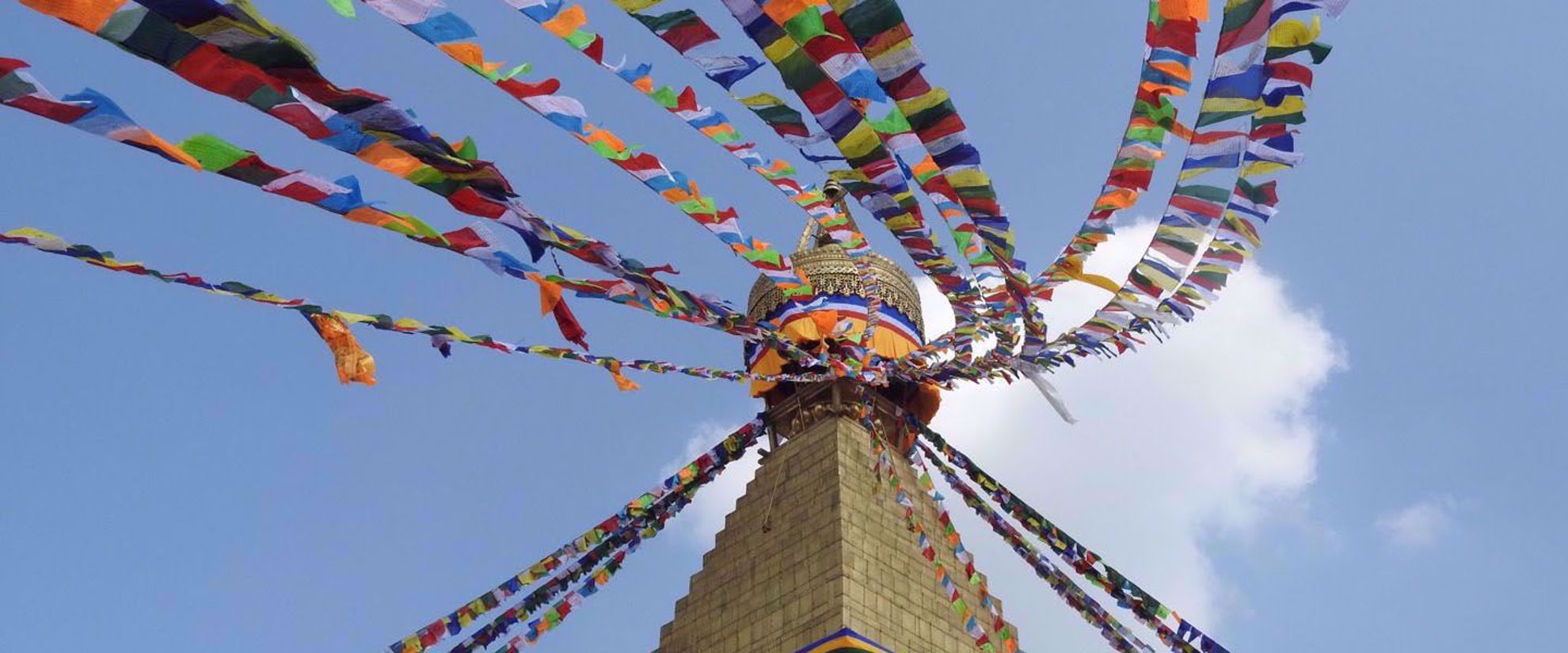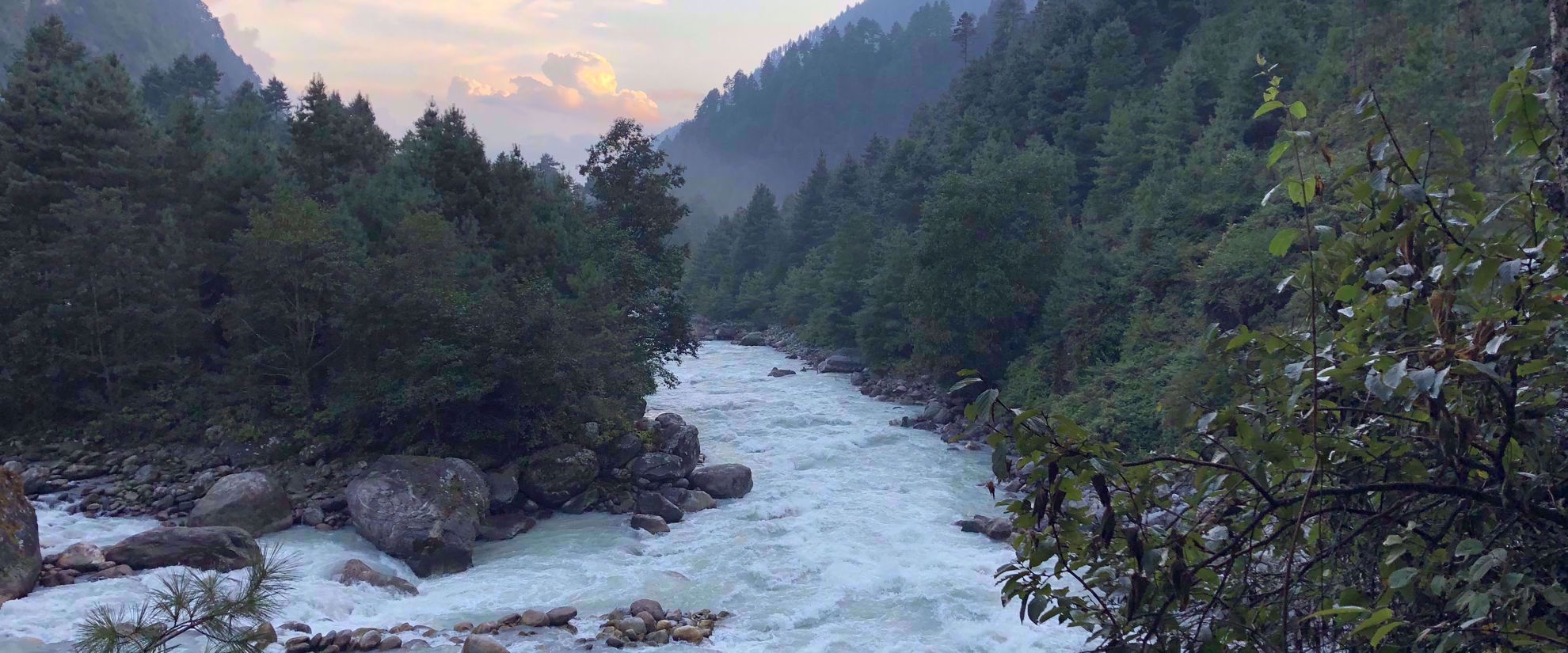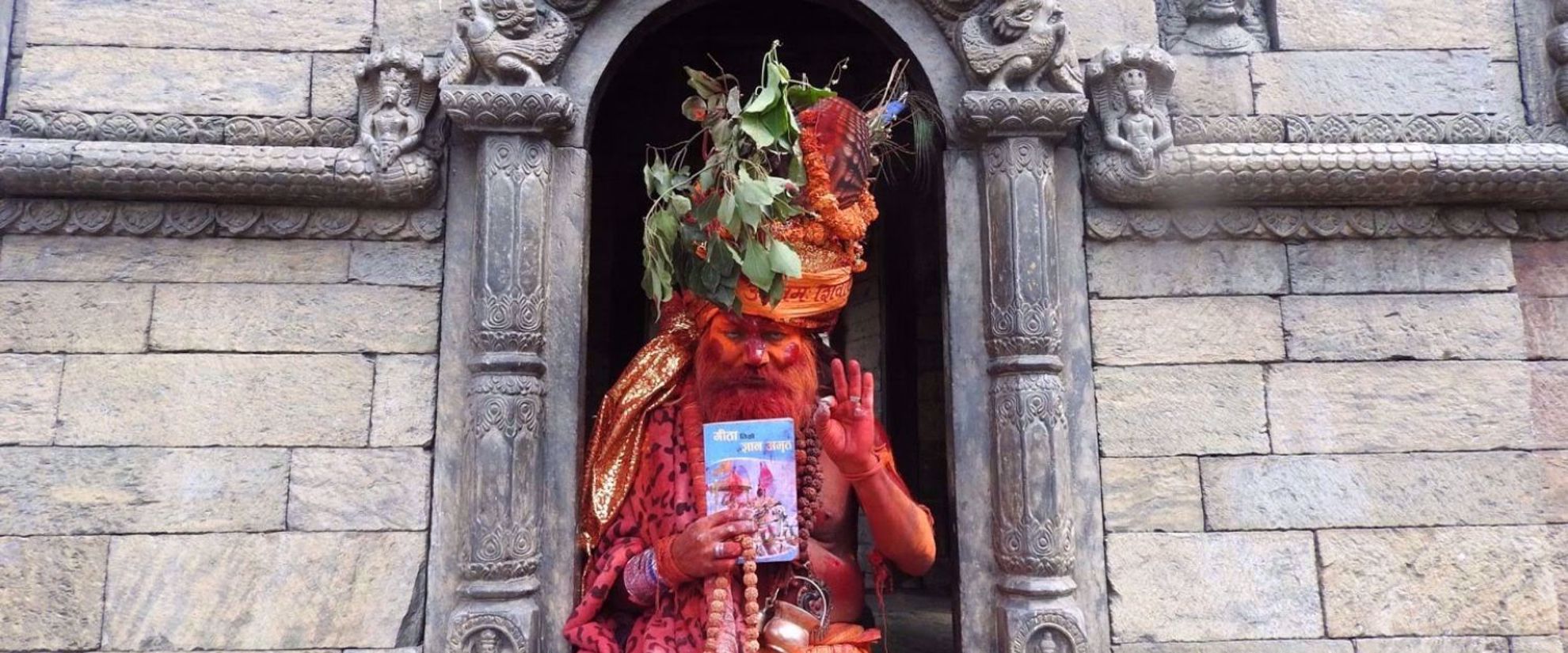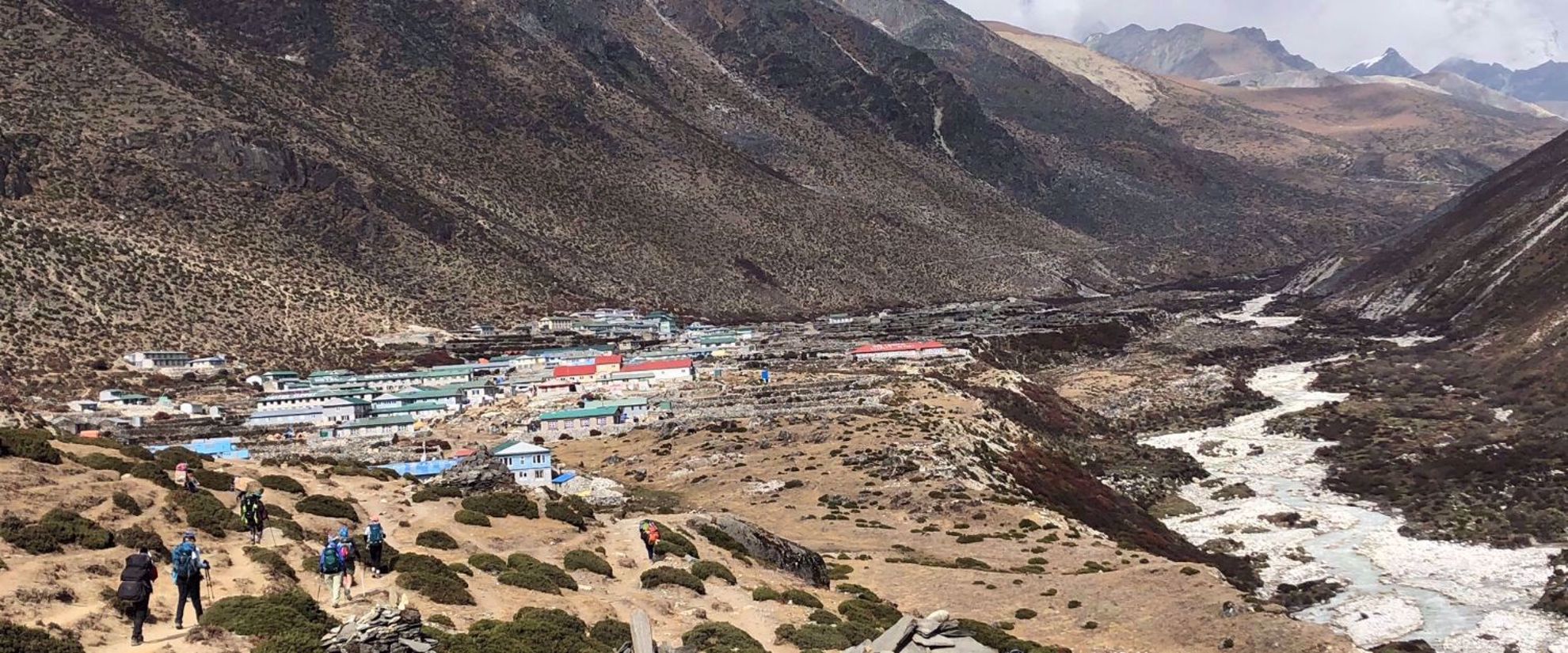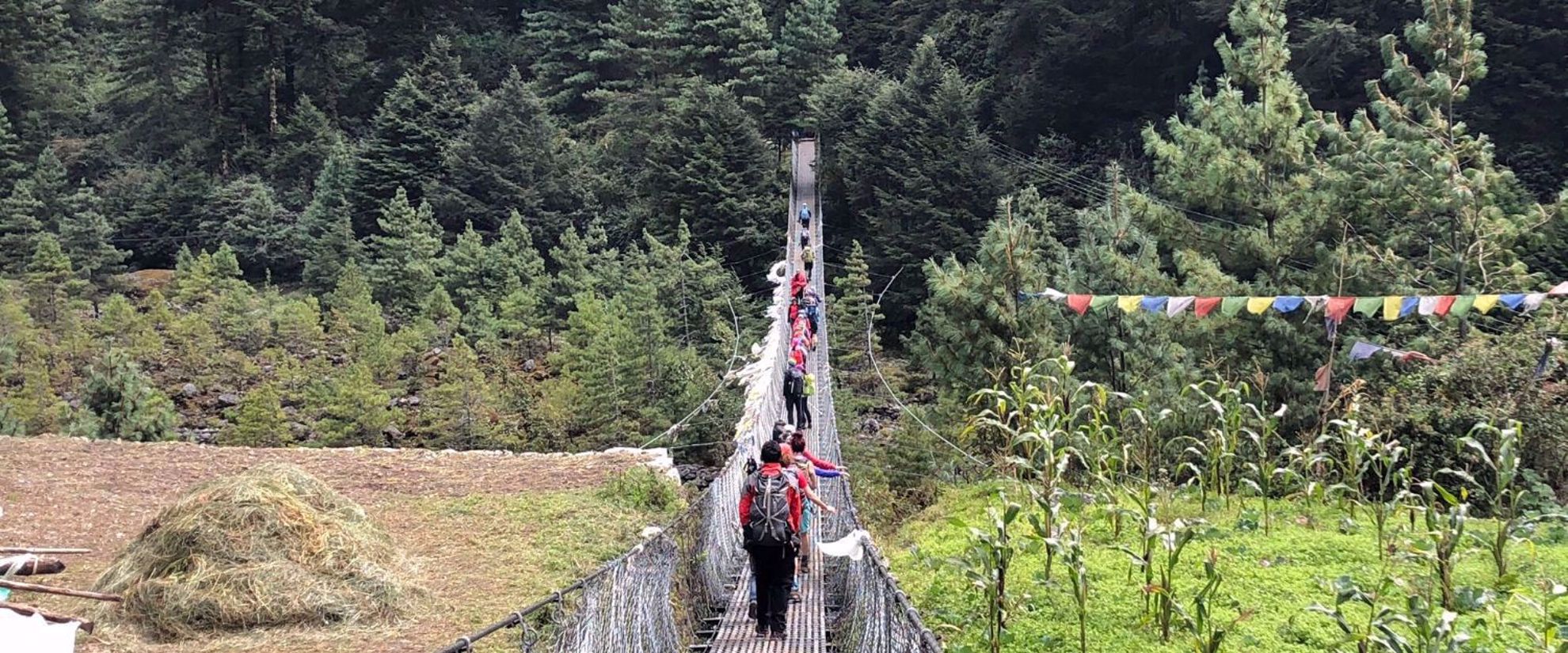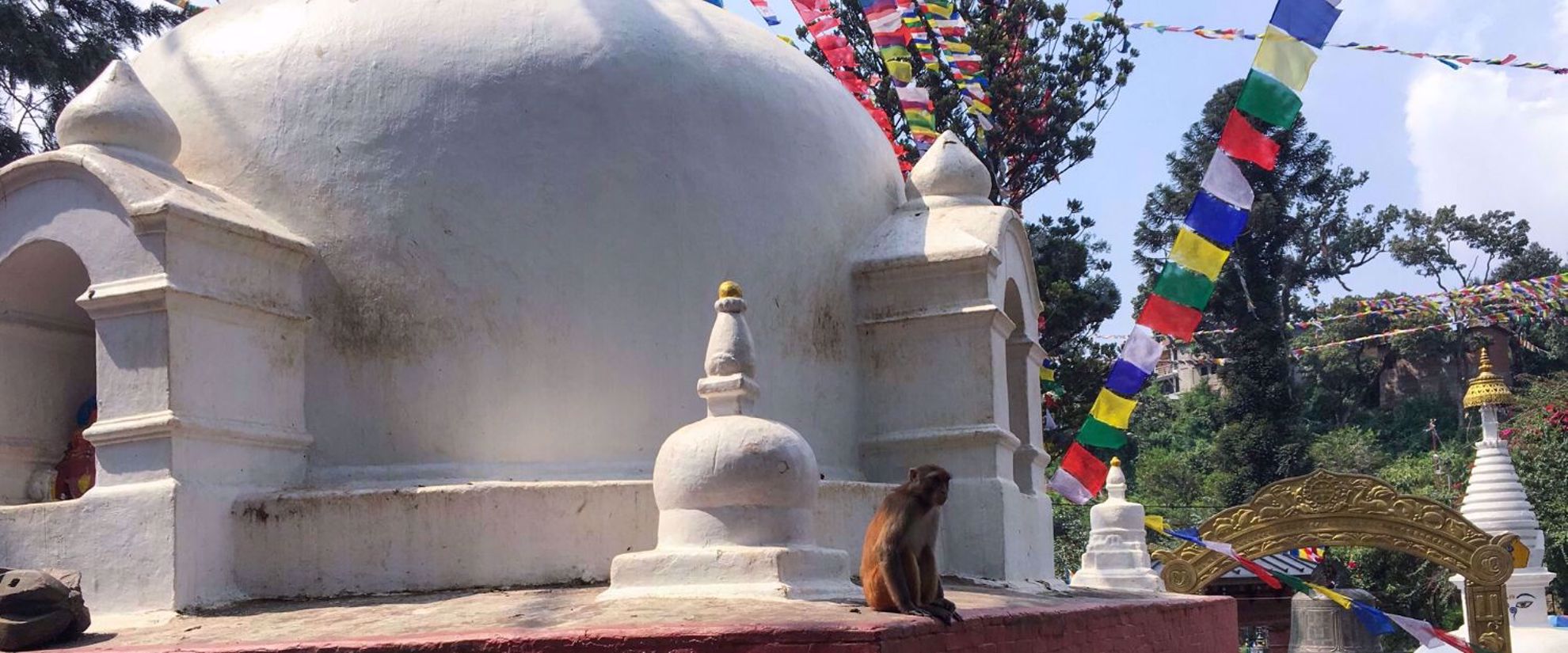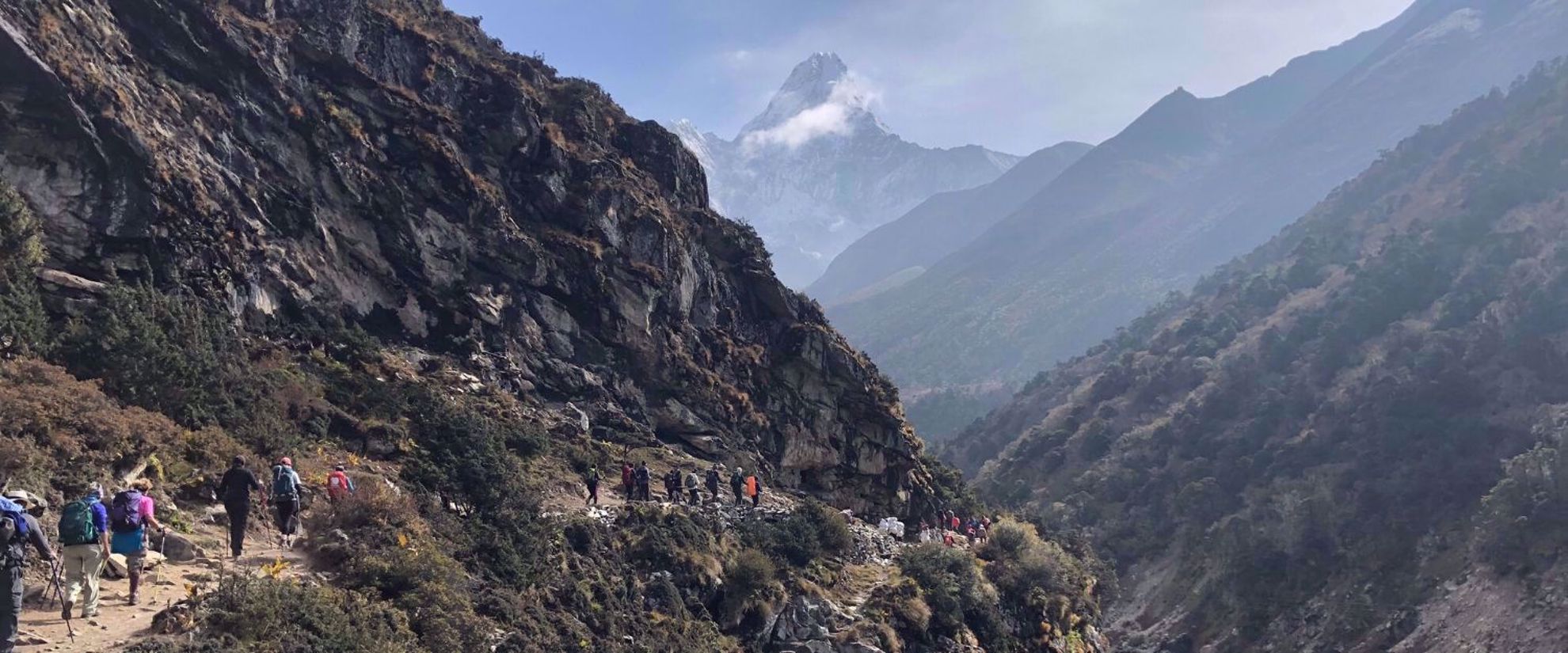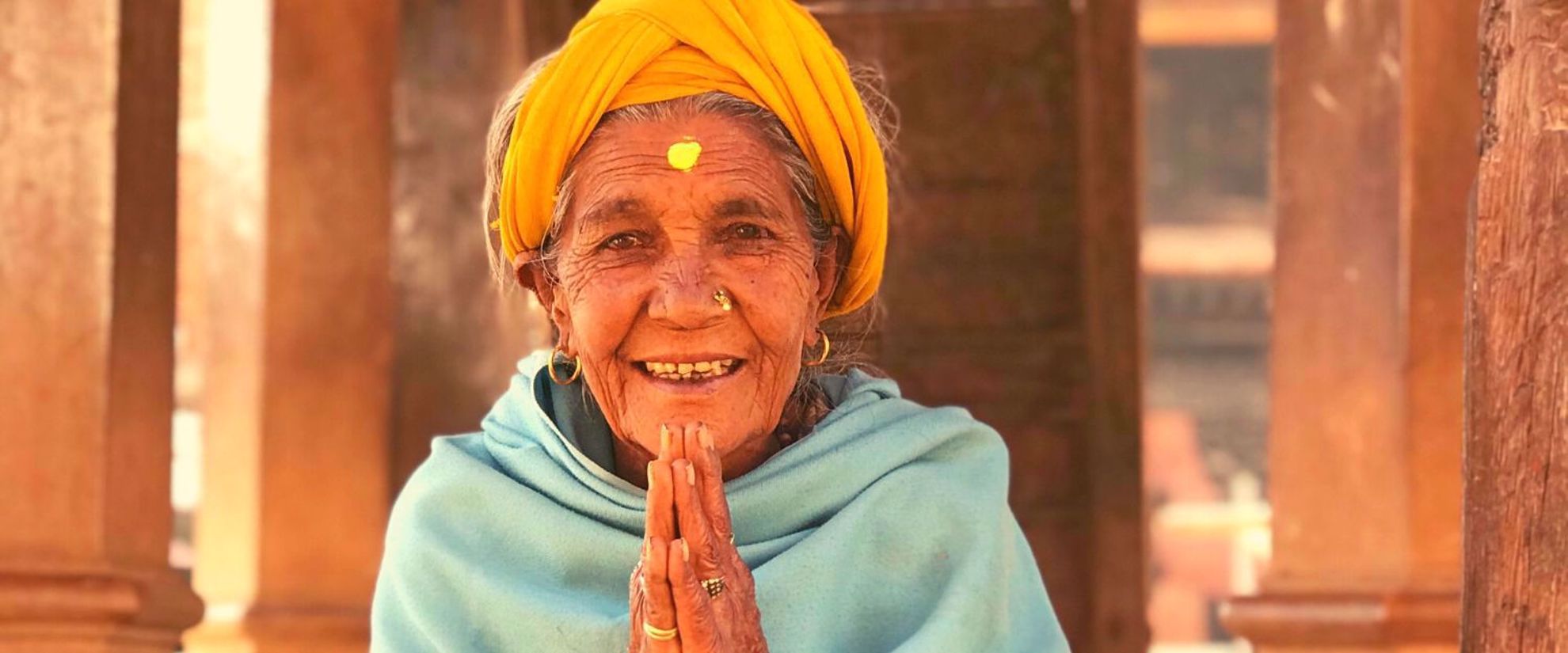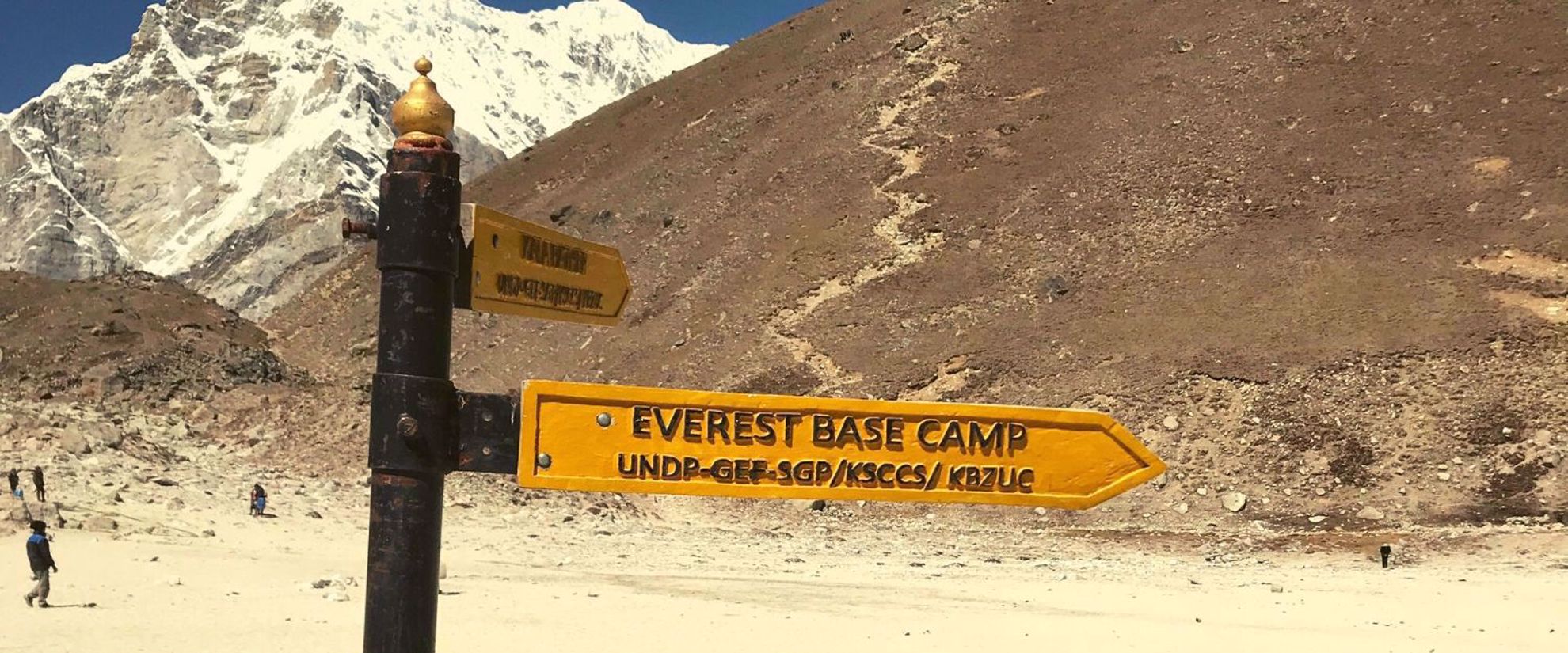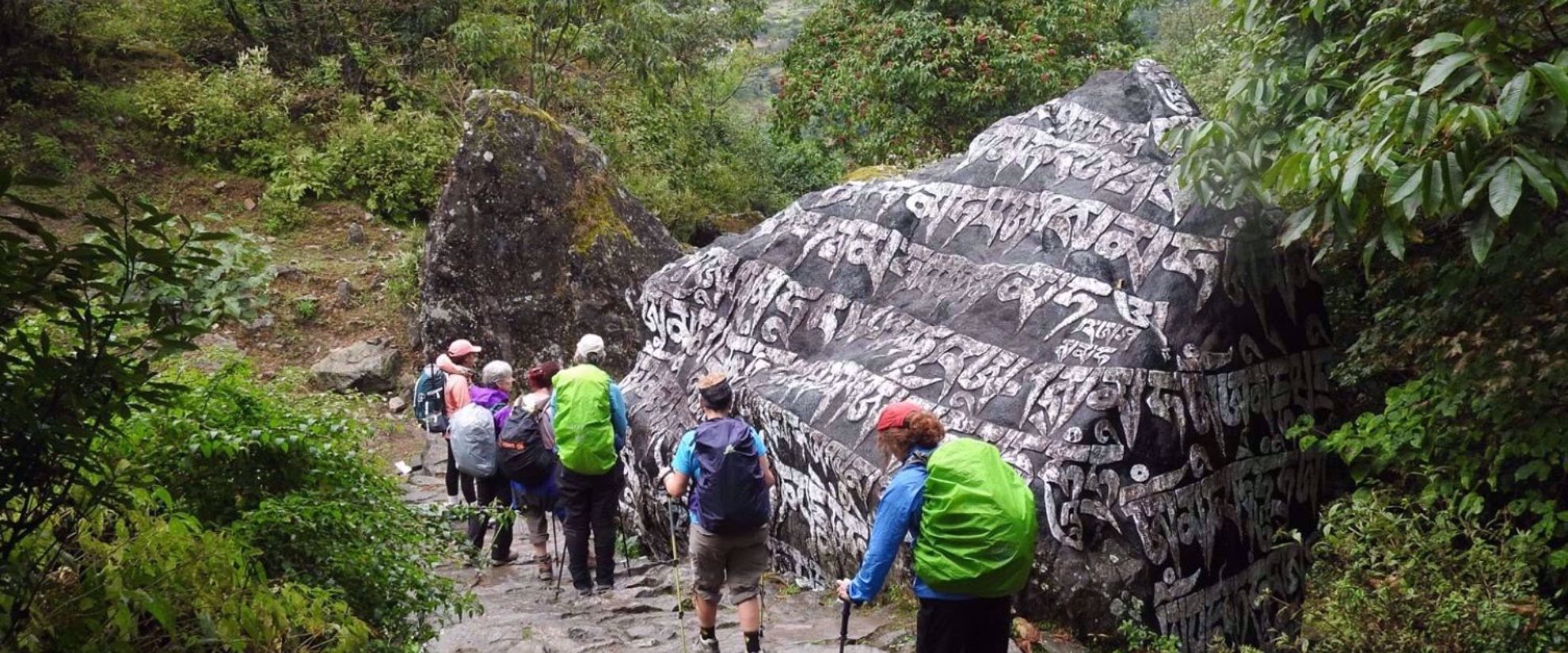
Trekking to Everest Basecamp
Destination: Kathmandu and the Himalaya, Nepal
| Activities: Trekking and Culture
Himalaya! Just the name invokes images of ice and snow-clad peaks soaring miles into the heavens, as well as the high mountain villages en route. On this three-week trek we combine strenuous and invigorating hiking in one of the most beautiful places in the world with a chance to learn about Sherpa culture. And while the trekking is incredibly beautiful, it is the legendary warmth and hospitality of the Sherpa that make it special. Our challenging trek through the Himalaya to the Everest region is guaranteed to be the trip of a lifetime! Maximum group size: 12
Highlights
- Trekking through the Khumbu, world famous both for its sheer beauty and the hospitality of the Sherpa people who live there
- Visiting mountain villages, including Namche Bazaar and Tengboche
- Staying in tea house lodges and talking with the people who own them
- Gazing at the mountains you've only read about
- Chatting with the international trekking community
- Having your gear transported so you only need to carry a daypack
Departures and Prices
|
Notify Me Regarding the Next Departure |
| Looking for another date? |
| Click below, and a member of our team will contact you. |
| Request A Private Tour |
Inclusions
- An Adventures in Good Company guide if over 8 participants
- An English-speaking Nepali sirdar (leader) and all necessary trekking staff
- 18 nights lodging
- All meals except for lunches in Kathmandu and beverages and desserts during the trek
- All transportation during the trip including airport transfers and the flight between Kathmandu and Lukla
- Full day of sight-seeing in Kathmandu including entrance fees
- All staff gratuities
Not included: airfare to Nepal, Nepal visa, guide gratuities, two lunches in Kathmandu, desserts and beverages during the trek, alcoholic beverages, and mandatory emergency evacuation insurance.
Please note: Mandatory Emergency Evacuation insurance is required for this trip. Since this is an adventurous trip in a very remote place, everyone is required to have "post departure benefits" which include emergency medical, evacuation and expatriation clauses. If you purchase complete trip insurance, these items are automatically included in your policy. If you do not purchase complete trip insurance, these items can be purchased separately either through your personal insurance company, adventure insurance online companies and through the company that we recommend – TravelEx. Your program director will request policy numbers prior to travel.
Trip Documents
Trip Info
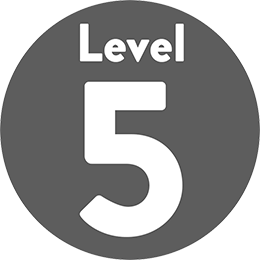
This trip requires being in excellent physical condition and having some hiking or backpacking experience. While any basically healthy woman can acquire the physical fitness necessary to enjoy this trip, please do not underestimate its difficulty. Not only are there some long days, it is a long time to be trekking and in a very different country. Previous high altitude experience is not necessary. What is most essential is a positive attitude, an open mind, and a sense of adventure. Women who do not have substantial previous hiking experience and excellent physical conditioning will find it difficult to both trek to the actual Everest Base Camp and climb Kala Pattar. This trip is rated 5 and requires a high degree of fitness. Adding some specific conditioning such as strength training, endurance training, and longer aerobic workouts is suggested. Rating: 1 2 3 4 [5].

This is both a strenuous trek in the Himalayas and a cultural exploration of the Sherpa community of Nepal, as well as cultural sightseeing in the Katmandu Valley. The length of the trek, altitude, the rustic conditions, and the limited food variety all combine to make the trek challenging both physically and emotionally.

Our lodging includes four nights at a 3-star Kathmandu hotel and fourteen nights in lodges along the trail. The lodges are very rustic, with two (occasionally three) beds per room and bathrooms down the hall or occasionally outside. Some bathrooms are squatting-style pit toilets. There is no heat in the rooms, so warm sleeping bags are essential. Dining rooms in the lodges will range from large airy windowed rooms with tables and Tibetan-carpet-covered seats around central heaters to roadside cafes.
Below is the proposed itinerary for the trip. As is true on any adventure travel trip, plans for any specific day may be modified due to weather considerations, unforeseen circumstances, new opportunities, and group interests.
Elevation: 4,500 feet. Overnight: Kathmandu
Overnight: Kathmandu
For anyone interested we can take a side trip to a nearby monastery. There are no roads or vehicles in the Khumbu so you can expect to see numerous other people on the Lukla-Namche "highway". This is the most densely populated area in the Khumbu, and we will go through numerous small villages
Hiking: 3 - 4 hours. Elevation at Phakding: 8,563 feet. Overnight: Phakding
We continue on to Namche Bazaar, the gateway to the Khumbu region. Namche is the most prosperous and the largest town in the Khumbu. Thamserku (6,648 meters / 21,800 feet), Kwangde Ri (6,187 meters/20,299 feet) and Khumbila (5,707 meters/ 8,901 feet) surround the natural bowl in which Namche sits.
Hiking: 5 - 6 hours. Overnight: Namche Bazaar. Elevation at Namche Bazaar: 11,300 feet
Overnight: Namche Bazaar
If we arrive in time, we can choose to attend the daily 3 p.m. prayer service. This is a cultural and religious center for the people of the Khumbu region, and for the trekker, it is also the place to see one of the best mountain panoramas in the world. Kwangde, Tawoche, Nuptse, Lhotse, Kangtega, and Ama Dablam all loom high above.
Hiking: 5 -6 hours. Elevation at Tengbochez: 12,670 feet. Overnight: Tengboche
Hiking: 5-6 hours trekking. Elevation at Dingboche: 14,469 feet. Overnight: Dingboche
Hiking: 4 hours. Overnight: Dingboche
Hiking: 3 - 4 hours. Elevation at Duglha: 15,100 feet. Overnight Duglha
Hiking: 3 -4 hours. Elevation at Lobuche: 16,200 feet
Hiking Lobuche to Gorak Shep: 3 - 3.5 hours, Gorak Shep to Everest Basecamp: 5 - 6 hours. Elevation at Gorak Shep: 17,598 feet. Overnight Gorak Shep
Hiking: 8 - 9 hours. Elevation at Duglha: 15,100 feet. Overnight: Duglha
Hiking: 5 - 6 hours. Elevation at Deboche: 12,533 feet. Overnight: Deboche
Hiking: 4.5 - 5.5 hours. Elevation at Namche Bazaar: 11,130 feet. OvernightL Namche Bazaar.
Hiking: 3 - 4 hours trekking. Elevation at Phakding: 8,563 feet. Overnight: Phakding
Hiking: 3 - 4 hours. Elevation at Lukla: 9,300 feet. Overnight: Lukla
Overnight: Kathmandu. Elevation at Kathmandu: 4,500 feet
4.8
(9 reviews)*These are the unfiltered reviews of women who have been on this trip in answer to the question "What made this trip special for you?". We take reviews very seriously and often tweak itineraries based on feedback. Please feel free to contact us about any questions you have.
Accomplishing such a significant trek with a great group of women, and skilled guides!
Since this was my first adventure vacation by myself, I was worried about every aspect! Immediately upon meeting our amazing guide Brenda Porter, all my worries seem to melt away. I enjoyed every moment, from planned trips in Kathmandu to dinners with the entire group. Definitely the highlight was visiting the villages where our Sherpas families lived. Being guided through this breathtaking landscape by Nima, Nima, Fura
Everything was great, I just thought we were going to the new basecamp
I would have liked to do the Kahla Patar hike but the aggressiveness of the prior day made it a wiser decision to not do it. Feeling under the weather with a cold, I decided to eliminate that hike. I think if there was a way to not do the distance past Gorak Shep without a good meal and on to Base Camp and back, some of us would have maybe been able to include the hike. It was an aggressive feat at the highest altitude. We discussed it and it doesn't seem like there would have been a better option with the existing itinerary.
I loved the trip! I wanted a challenge and, that is what I got. Anne was awesome as our guide. She was super-supportive and positive the entire time. Anything we needed, she was there for. Would not hesitate to do another trip with her in the future. I am glad we had Anne as a guide because our Nepalese guides, which were great, did not have the best English. So, Anne's presence was vital! I got pushed outside my comfort zone once we got up above 17,000 feet. Bit, like I said above, I wanted a number 5 challenge and got it. When will there be a 6?
The share beauty of the area and the magnitude of the effort to make the trek.
It was a beautiful trekking all the way with changing scenery.
-
Where do we eat?
All your meals will be served at the lodges where you're staying or trekking by. In Kathmandu you will have dinner at a restaurant where you can order off the menu. -
What dietary preferences or restrictions can you accommodate on this trip?
Overall food variety on the trek is limited, with few fresh vegetables and no fruit. This is even more true for vegetarian and vegans; options are available but the variety of foods is limited. If you are concerned about having enough protein during your trip, please bring some plant-based protein sources such as nut butter, instant dried hummus, or high-protein energy bars. If you cannot eat gluten or if you have other dietary restrictions, you will need to bring some supplemental food with you. -
What are the chances I'll make it to Everest Basecamp?
Typically about 50% of people make it to the actual basecamp. Aside from conditioning, the two primary factors determining the likelihood are whether you have acclimated to the elevation and whether you have stayed healthy. Our schedule had built in acclimatization time but 17500' is high, and many people have trouble with altitude or have gotten respiratory illnesses. This is truly a trip where the journey is more important than the destination. -
Why don't you spend two nights at Gorak Shep so there is more time to both go to Basecamp and climb Kala Patthar?
At Gorak Shep, even people who are acclimatizing adequately are typically not eating much and not sleeping well, and therefore are losing strength while they are there. If you don't feel well enough to be able to do both in those 2 partial days, you are likely to feel worse the longer you stay there. -
I will be coming by myself. Do I need to pay a single supplement?
You only need to pay a single supplement if you want to guarantee you have your own room. Otherwise we’ll pair you up with someone and then switch roommates every time we switch lodging.

